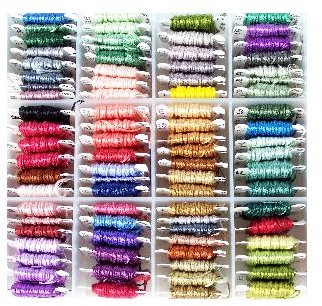Step-by-Step Sample of a Craft Business Plan
Reality Check
Having a passion for arts and crafts is a great place to start, but that does not mean you should completely overlook the importance of having a solid plan to back up your interests.
While being passionate about your product is a great place to start, you need to put a plan into place that will help you to start, build and grow your business. That is where this sample of a craft business plan can help you to focus on your goal of being a small business owner.
After putting all the pieces into place, implementing them is much easier, and your excitement for your passion project will translate into a passion that is reciprocated by your customers.
Photo: Melodi2
The Plan
Creating a business plan will provide you with a solid basis from which to start your craft business. Generally, most business plans follow a similar format, and this sample of a craft business plan includes the following areas:
- Executive Summary
- Mission Statement
- Product/Service Descriptions
- Marketing Plan
- Financial Information
Executive Summary
The Executive Summary pinpoints the main bulletpoints of your business, offering a quick glance at the most important aspects of your small business and what you hope to achieve. These can include:
- contact information for your business
- a brief description of you & your business
- your objectives & how you will achieve them
Example:
Sparkle Jewelry Designs is a handcrafted jewelry business with a focus on modern styles with an edge.
Our ideal customers are females between the ages of 20 to 40. Our clients pride themselves on wearing fashions that express their individuality and they choose our designs for their creative styles that are both fashion-forward and can be worn for years to come.
Mission Statement
The Mission Statement should include your intentions for your company
- trends and how you fit into the marketplace
- be specific with your goals & think beyond simply being a success in your target market
Example:
Our clients love fashion but they are not satisfied with mass-produced, cookie-cutter accessories. They seek out our brand for our attention to detail, custom designs, and the personal touch that comes with our handcrafed designs.
Product/Service Description
This section should include information on what makes your product special.
- What is your unique selling point?
- How is your product different than what is currently available in the marketplace?
- Do you do something faster, better or in a way that is innovative when compared to your competition?
- What benefit does your product have for your customers? Does it solve a problem or fill a hole in the marketplace? How does your product uniquely enhance their life?
Example:
Each piece in the Sparkle Jewelry Designs line is handcrafted in limited edition batches.
This provides a much sought-after appeal to our pieces, while offering unique designs that are handcrafted to the highest standards specifically for our customers.
This also allows us to apply the highest level of craftmanship to every piece in the Sparkle Jewelry Designs line.
Marketing Plan: Reaching Your Target Market
This section should be completed following a market analysis that will determine the three main components of your marketing plan.
• your target market
• your competition and how you plan to compete
• marketing expenses & how you will market your crafts

Example:
Sparkle Jewelry Designs are currently sold via our online website, which receives traffic flow from our various social media pages on Facebook, Twitter and LinkedIn.
We plan to market our jewelry via these online spaces, as well as through various blogs that our shoppers read. Our sales will be tracked online via Paypal, which we will use to collect payment, as well as run & print monthly reports of all sales & expenses.
Sparkle Jewelry Designs is located in downtown Toronto, which gives us access to various crafts shows, artisan markets and trade shows where we rent space to sell our wares.
Our clients love fashion but they are not satisfied with mass-produced, cookie-cutter accessories. They seek out our brand for our attention to detail, custom designs, and the personal touch that comes with our handcrafted designs.
Photo: Andres Rodriguez
Financial Information
This section should include information on sales, expenses and cash flow expectations.
- what start-up costs will you have?
- how will you source supplies?
Example:
Since Sparkle Jewelry Designs will be run from our home, our start-up expenses will be minimal. Our expenses will be web hosting, domain registration and minimal advertising costs. We will also need to purchase packaging materials for our orders, and to pay a minimal fee for each sale by using Paypal as our payment processor.
We expect our cash flow to be more lucrative during Fall (for holiday shoppers) and Spring, with a slow-down in Summer months, as online traffic and shopping in general seems to slow down in those periods.
Final Thoughts
While your aim is to make your business plan as professional as possible, don’t think that you cannot be creative with your business plan. Creating a small craft business plan will allow you to see your entire business laid out before you, and give you a snapshot of how you can live your dream and make money doing so.
Inserting your personality and the passion you have for your craft business idea will translate into a compelling document that will help you propel your business forward.
